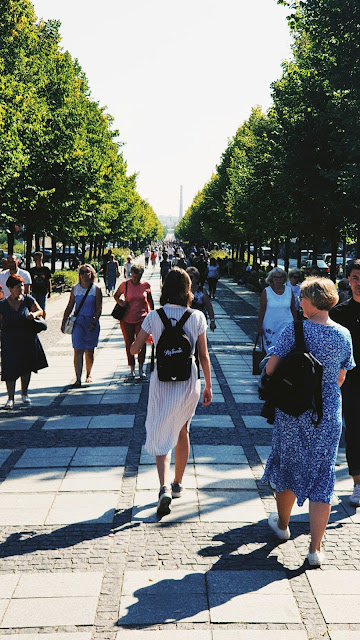How Pedestrian-Friendly Cities Are Redefining Urban Living
In cities across the globe, a quiet revolution is reshaping the way people move, connect, and live. From Copenhagen to Bogotá, and Paris to Portland, pedestrian-friendly urban design is emerging as a powerful response to the challenges of climate change, traffic congestion, and declining quality of life.
Once dominated by cars, cities are rediscovering the power of the human scale—reimagining streets not just as conduits for vehicles, but as shared public spaces for walking, gathering, and thriving. As urban planners, architects, and citizens embrace this shift, pedestrian-friendly cities are redefining what it means to live well in the 21st century.
The Rise of Walkable Cities
The movement toward pedestrian-friendly cities is rooted in a broader vision of sustainable urban development. Walkable environments offer tangible benefits for health, economics, and the environment.
🚶♂️ Healthier Citizens
Walking reduces the risk of heart disease, diabetes, and obesity. In walkable cities, people are more likely to integrate physical activity into their daily routines—walking to work, school, or errands—without needing a gym.
🌱 Cleaner Air and Lower Emissions
Fewer cars mean less air pollution and lower greenhouse gas emissions. Pedestrian zones, bike lanes, and public transit all contribute to reducing a city’s carbon footprint.
💰 Economic Vitality
Walkable streets tend to boost local economies. Small businesses, cafés, and cultural venues thrive in pedestrian-heavy areas, where foot traffic brings more visibility and spontaneous visits than car-dependent zones.
🏘️ Social Connectivity
When people walk, they interact—with neighbors, street performers, markets, and public art. Streets become vibrant spaces for connection, not just movement.
Redesigning Cities for People, Not Cars
In the 20th century, many cities were shaped by the dominance of automobiles. Highways carved through neighborhoods, parking lots replaced parks, and human experience was often subordinated to traffic flow. Today’s urban designers are reversing that trend through innovative planning strategies:
🔹 Car-Free Zones
Cities like Madrid, Ghent, and Oslo have introduced car-free city centers, transforming formerly congested roads into lively pedestrian boulevards lined with trees, shops, and cafés.
🔹 The 15-Minute City
Popularized by Paris, this concept proposes that all essential services—work, education, healthcare, leisure—should be within a 15-minute walk or bike ride from home. It decentralizes urban life and promotes local living.
🔹 Wider Sidewalks and Better Lighting
Basic but critical, these enhancements make walking safer and more inviting, especially for seniors, children, and people with disabilities.
🔹 Green Infrastructure
Pocket parks, street trees, and rain gardens cool the air, reduce runoff, and offer pedestrians shaded, pleasant places to rest or gather.
Case Studies: Cities Leading the Way
Copenhagen, Denmark
A global model for pedestrian and cyclist infrastructure, Copenhagen has designed its city center to prioritize people over cars. The iconic Strøget is one of Europe’s longest pedestrian streets, and over 60% of residents commute by bike or on foot.
Bogotá, Colombia
Through programs like Ciclovía, Bogotá closes major streets to cars every Sunday and holiday, inviting millions of residents to walk, bike, and play. The initiative has inspired similar efforts worldwide.
Barcelona, Spain
Barcelona’s Superblocks (Superilles) reduce car traffic within designated areas, reclaiming space for walking, biking, and community life. The results: quieter streets, lower pollution, and more human interaction.
Challenges and Considerations
Creating pedestrian-friendly cities isn’t without its challenges. Critics argue that car restrictions can inconvenience some groups, such as the elderly or people in low-density suburbs. Ensuring access and equity must remain central to the design process.
Public buy-in is also key. Transforming a car-centric culture requires political courage, strong leadership, and grassroots advocacy. But as successful examples have shown, once people experience the benefits, resistance often turns to enthusiasm.
A Vision for the Future
As climate pressures mount and urban populations grow, pedestrian-first planning offers a pathway to resilient, livable, and humane cities. It’s not just about sidewalks or traffic—it’s about restoring a sense of belonging and connection in the places we inhabit.
When cities prioritize people over vehicles, everything changes. Streets become safer. Neighborhoods grow stronger. And daily life feels more meaningful, less rushed.
In the age of concrete and cars, the pedestrian-friendly city is a reminder that the best cities are the ones where people want to stay, not just pass through.


No comments:
Post a Comment